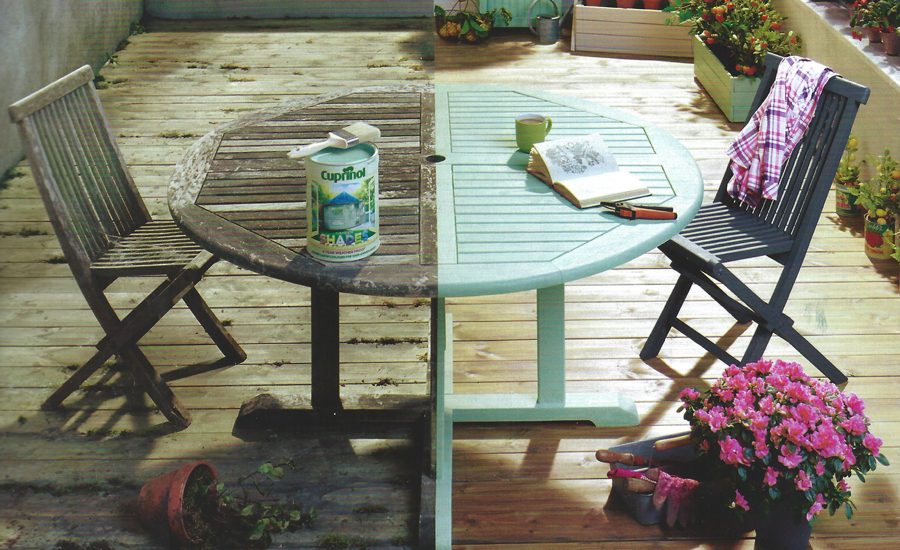2015 was financially a better year for the coatings industry, with large corporate manufacturers announcing improved returns on sales driven by a mix of volume growth in some (but not all) sectors, lower costs of manufacture and leaner internal operations. As a result, there is more cash in the bank to fund long-term sustainable development projects, now that most of the low hanging fruit has been dealt with.
2015 was also the year that AkzoNobel was recognised for its ‘distinguished sustainability performance’ and named as the Materials Industry Group Leader by the Dow Jones Sustainability Index. To quote from the Dow Jones citation, “Akzo Nobel continues to profit from implementing its Performance Improvement Programs that target sustainability issues across the board: from improving operational eco-efficiency to ensuring that its business is able to attract, develop and retain talented employees. Its Human Cities Initiative, which aims to create more liveable urban environments by considering factors including heritage, transportation and colour, demonstrates how corporate philanthropy can be closely aligned with a company’s business drivers.” Quite an accolade!!
In the same vein, Beckers has just published a most impressive and detailed corporate Sustainability report (http://www.beckers-group.com/sustainability/sustainability-report). It is evident that the driving force for sustainable development comes from the top, and Dr. Boris Gorella, the CEO, is very clear when he writes, “At Beckers, we have always viewed sustainability not only as an imperative for our business, serving our customers’ needs, but have also considered it as one key element driving the development of Beckers’ people and our culture. What makes me truly happy is that our 2015 report illustrates that sustainable thinking and doing is already part of our daily work across all functions and in all regions at Beckers.” Well put!!
It is very encouraging to see companies such as AkzoNobel and Beckers building their long-term strategies around sustainability, addressing not only the environmental but also the economic and social pillars as well. I understand that Johan Landfors, President of AkzoNobel North America, will present the keynote address at the next CTT conference in September. He should be well worth listening to!
However, it is important to understand the motivations for investment in sustainable development wherever you are in the coatings supply chain. The long-term goals of people, profit and planet are well recognised, but where are the driving forces for change right now coming from?
The American Coatings Show in Indianapolis (ACS) was a most impressive event. As is customary at this biannual conference and exhibition, attendees were surveyed about their attitudes to sustainability. In one vote, 81% of respondents scored sustainability as either “important” or “indispensable”, with only 13% seeing it as a “nice-to-have” and the remaining 6% as “market hype”. When asked about the drivers of green R&D activities, 43% saw the impetus for change coming from legislation (such as low VOC, GHS and new EPA ozone standards), while 31% saw the driver as “responsibility for society” and a surprisingly low 26% voted for “consumer requests”. Market pull is evidently not the main driving force at the moment despite pressure from LEED and other downstream environmental standards. The main driving forces seem to be government programs such as USDA’s BioPreferred® and technology push from the coatings industry.
In my last blog, I listed many of the exciting new opportunities being worked on that can enhance the functionality of coatings. At the ACS, reference was made to self-healing paints, electrochromic and thermochromic coatings, and the use of biobased materials that offer performance benefits as well as reduced use of fossil fuels. However, I wonder if developments such as these are examples of technology push rather than market pull?
It looks as if the key requirements from a market perspective are currently more practical in nature, focusing on easy-to clean or self-cleaning capabilities and coatings that are easier to apply, more durable and anti-microbial.
Whatever the motives, it is evident that we shall see some fascinating developments down the pike, although a number of road blocks will need to be addressed on the way. There are concerns that new technology will bring with it loss of existing functionality and performance requirements. To quote one downstream industry, “we need to see the emergence of second-generation low- or ultralow-VOC coatings with improved performance.” Investment continues in biobased raw material development despite the poor manufacturing economics that are currently favouring oil-based traditional materials.
Perhaps, the coatings industry needs to inject a little more excitement in its public relations to stimulate market interest in long-term sustainable development. With this in mind, I recently saw an advertisement in a UK consumer magazine that reminded me of the opportunities for up-cycling old products with a fresh coating of paint or varnish to make them more attractive and valuable than the original item being coated. In the picture that follows, it is good to see an old deck or roof garden transformed by the application of a number of coatings.
In a nutshell, while sustainability is a maturing issue within the coatings industry, we need to keep the momentum going with strong leadership from the top, the roll-out of technical innovations and the use of stimulating PR to raise awareness throughout the supply chain of the importance of sustainable development to society as a whole.
This blog is dedicated to Brian Widdop who recently passed away. Brian enjoyed a long and distinguished career at Crown Paints and the Hempel Group. He led the early work to interpret Sustainability in the context of the Coatings Industry in the UK and inspired me to get involved and write with passion about the issue. He will be sadly missed.



Report Abusive Comment